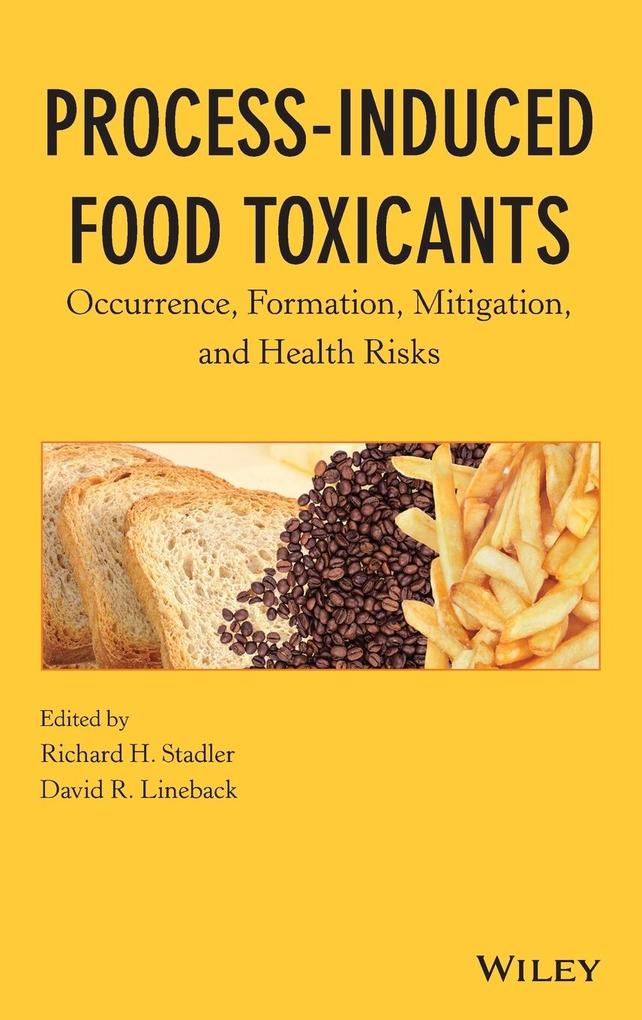Process-Induced Food Toxicants combines the analytical, health, and risk management issues relating to all of the currently known processing-induced toxins that may be present in common foods. It considers the different processing methods used in the manufacture of foods, including thermal treatment, drying, fermentation, preservation, fat processing, and high hydrostatic pressure processing, and the potential contaminants for each method. The book discusses the analysis, formation, mitigation, health risks, and risk management of each hazardous compound. Also discussed are new technologies and the impact of processing on nutrients and allergens.
Inhaltsverzeichnis
Preface ix
Contributors xiii
Part I Specific Toxicants Related to Processing Technology 1
1 Introduction to Food Process Toxicants 3
David R. Lineback and Richard H. Stadler
2 Thermal Treatment 21
2.1 Acrylamide 23
Craig Mills, Donald S. Mottram, and Bronislaw L. Wedzicha
2.2 Acrolein 51
Takayuki Shibamoto
2.3 Heterocyclic Aromatic Amines 75
Robert J. Turesky
2.4 Hazards of Dietary Furan 117
P. Michael Bolger, Shirley S-H. Tao, and Michael Dinovi
2.5 Hydroxymethylfurfural (HMF) and Related Compounds 135
Francisco J. Morales
2.6 Chloropropanols and Chloroesters 175
Colin G. Hamlet and Peter A. Sadd
2.7 Maillard Reaction of Proteins and Advanced Glycation End Products (AGEs) in Food 215
Thomas Henle
2.8 Polyaromatic Hydrocarbons 243
Jong-Heum Park and Trevor M. Penning
3 Fermentation 283
3.1 Ethyl Carbamate (Urethane) 285
Colin G. Hamlet
3.2 Biogenic Amines 321
Livia Simon Sarkadi
4 Preservation 363
4.1 N-Nitrosamines, Including N-Nitrosoaminoacids and Potential Further Nonvolatiles 365
Michael Habermeyer and Gerhard Eisenbrand
4.2 Food Irradiation 387
Eileen M. Stewart
4.3 Benzene 413
Adam Becalski and Patricia Nyman
5 High-Pressure Processing 445
Alexander Mathys and Dietrich Knorr
6 Alkali and/or Acid Treatment 473
6.1 Dietary Signifi cance of Processing-Induced Lysinoalanine in Food 475
Mendel Friedman
6.2 Dietary Signifi cance of Processing-Induced D-Amino Acids 509
Mendel Friedman
6.3 Chloropropanols 539
Jan Velíšek
Part II General Considerations 563
7 Application of the HACCP Approach for the Management of Processing Contaminants 565
Yasmine Motarjemi, Richard H. Stadler, Alfred Studer, and Valeria Damiano
8 Emerging Food Technologies 621
Fanbin Kong and R. Paul Singh
9 Food Processing and Nutritional Aspects 645
Josef Burri, Constantin Bertoli, and Richard H. Stadler
10 Risk Communication 679
David Schmidt and Danielle Schor
11 Risk/Risk and Risk/Benefit Considerations 695
Leif Busk
Index 711
